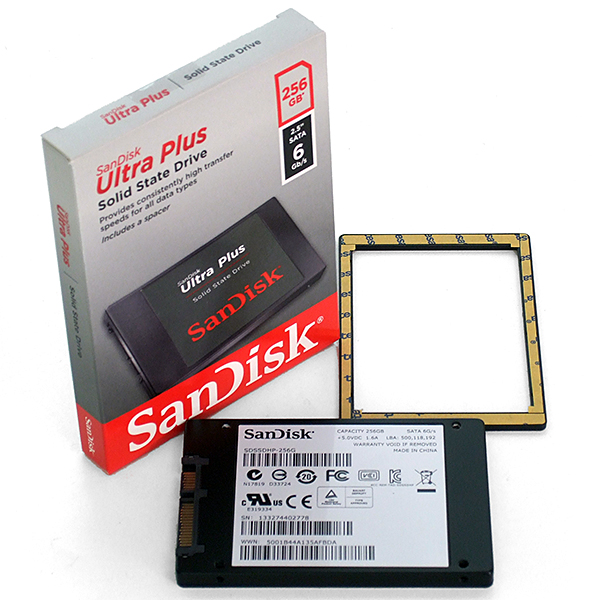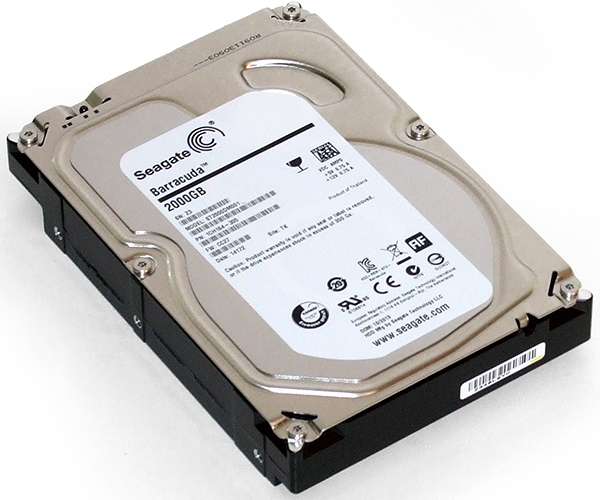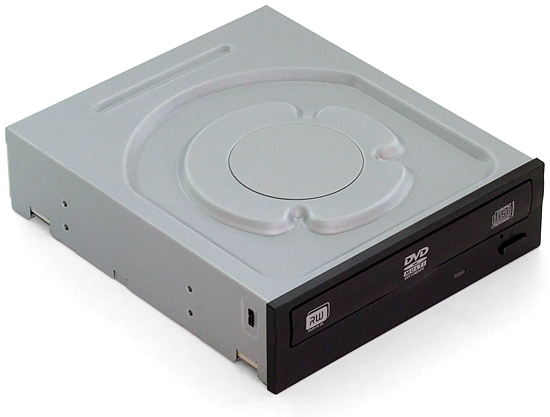System Builder Marathon, Q1 2014: The $2400 People’s Choice PC
An Alphabet Soup Of Storage: SSD, HDD, And ODD
Readers recommended a change in CPU and graphics, so I tried to keep the other performance-oriented aspects of this build as close to the previous effort as possible. Since system drive performance is among our measurements, the previous machine’s SSD remains.
System Drive: SanDisk Ultra Plus SDSSDHP-256G-G25
It’s no longer mentioned in our Best SSDs For The Money column, but that’s probably because a competing model dropped to $200.
Read Customer Reviews of SanDisk's Ultra Plus 256 GB SSD
The SanDisk Ultra Plus is still an attractive deal at $170 though, placed between Tiers 1 and 3 in both performance and price. No Tier 2 products made the recommended list, though the guide’s editor seemed to have other priorities.
Storage Drive: Seagate Barracuda 2 TB
SSD-equipped systems usually run out of capacity long before you start piling on your collection of movies, music, and pictures. A hard drive assumes the role of mass storage for stuff that doesn’t get used as often and isn't performance-sensitive.
Read Customer Reviews of Seagate's Barracuda 2 TB
Even though it sports a 7200 RPM spindle speed and 64 MB of cache, we’re not expecting any speed records from the ST2000DM001. But it does give us a lot of storage space for $90. Better still (for me), this optional component isn’t tested by our benchmark suite.
Optical Drive: Lite-On iHAS124
I’ve always believed that a high-end build should have the flexibility to support multiple media formats, which is why I usually equip these machines with a Blu-ray writer. Unfortunately, the original order price of our other components didn’t leave room in the budget for that this time.
Read Customer Reviews of Lite-On's iHAS124
Able to burn DVD media at 24x and read my driver discs before I could get online to look for update, Lite-On’s iHAS124 is a low-cost solution to a problem that some of our readers don't have. Still, I consider the $20 spend to be worthwhile.
Current page: An Alphabet Soup Of Storage: SSD, HDD, And ODD
Prev Page CPU And Motherboard Cooling Next Page Hardware InstallationGet Tom's Hardware's best news and in-depth reviews, straight to your inbox.
-
Darkerson Interesting move, showing the nicest build 1st instead of last. Cant wait to see all the builds compared and see what you all come up with as the budget goes down.Reply -
captain_jonno Looks good. Surprised only went with a 750w PSU though. Considering 2x 780 ti's and overlockingReply -
Crashman Reply
Yessir, two 780s and a bit of experience in part picking lead me to expect around 700W of required system power. And, it came out just a little less than 700W.12951919 said:Looks good. Surprised only went with a 750w PSU though. Considering 2x 780 ti's and overlocking
Power supplies of greater capacity and similar reliability at this price tend to be lower-efficiency units. And we like efficiency too.
-
Crashman Reply
It's not calculated power, it's measured power for the entire system (at the power plug). No addition or subtraction was used.12952008 said:I dont get the "W" usage?680+237 = 917w. Not 802w as meation above?
1.) Start the system, wait for all processes to load, take a measurement (Active, but idle)
2.) Load the CPU using eight thread of AVX-optimized Prime95, take a reading (CPU Load).
3.) Load GPUs with 3DMark 11 Test 1 in loop, take max reading as it heats up (GPU Load).
4.) Load both applications (CPU+GPU Load).
The "math problem" is that any program used to fully load the GPU also partly loads the CPU. So when test 4 is Prime95+3DMark, Prime95 can only use whatever CPU resources are left with 3DMark running.
So the most accurate system power reading is with "CPU+GPU Load" applied. The system measurement for "CPU Load" still includes the power of an idle GPU. And the system power measurement for "GPU Load" still includes the amount of CPU energy it takes to run the GPU's test application.
-
YellowBee Reply12952046 said:
It's not a calculation, it's a reading for the entire system (at the power plug). Load the CPU using eight thread of AVX-optimized Prime95, take reading one. Load GPUs with 3DMark 11 Test 1 in loop, take max reading as it heats up.12952008 said:I dont get the "W" usage?680+237 = 917w. Not 802w as meation above?
The "math problem" is that any program used to fully load the GPU also partly loads the CPU. So when test 3 is Prime95+3DMark, Prime95 can only use whatever CPU resources are left with 3DMark running.
So the most accurate system power reading is with "CPU+GPU Load" applied. The system measurement for "CPU Load" still includes the reading of an idle GPU. And the system power measurement for "GPU Load" still includes the amount of CPU power it takes to run the GPU.
Very much appreciated and satisfying answer.
Thanks Crashman :) -
bemused_fred Reply
Any chance of including these calculations in all future articles, so that we know exactly how the power graph is calculated? Ta.
It's not calculated power, it's measured power for the entire system (at the power plug). No addition or subtraction was used.1.) Start the system, wait for all processes to load, take a measurement (Active, but idle)2.) Load the CPU using eight thread of AVX-optimized Prime95, take a reading (CPU Load).3.) Load GPUs with 3DMark 11 Test 1 in loop, take max reading as it heats up (GPU Load).4.) Load both applications (CPU+GPU Load).The "math problem" is that any program used to fully load the GPU also partly loads the CPU. So when test 4 is Prime95+3DMark, Prime95 can only use whatever CPU resources are left with 3DMark running.So the most accurate system power reading is with "CPU+GPU Load" applied. The system measurement for "CPU Load" still includes the power of an idle GPU. And the system power measurement for "GPU Load" still includes the amount of CPU energy it takes to run the GPU's test application.12952008 said:I dont get the "W" usage?680+237 = 917w. Not 802w as meation above? -
Crashman Reply
Which calculations?12952271 said:
Any chance of including these calculations in all future articles, so that we know exactly how the power graph is calculated? Ta.12952046 said:It's not calculated power, it's measured power for the entire system
-
jabuscus wow. such performance. many ram. they should've put in 16gb of ram for real high-end specs. ;)Reply -
Versutia As I'm into quiet enclosures, I'd go along this route:Reply
http://pcpartpicker.com/p/3fuGw
Wondering how much of a difference would non-reference cards make. Obviously, CPU cooler and RAM could be different, BR drive optional, storage drive as well.







